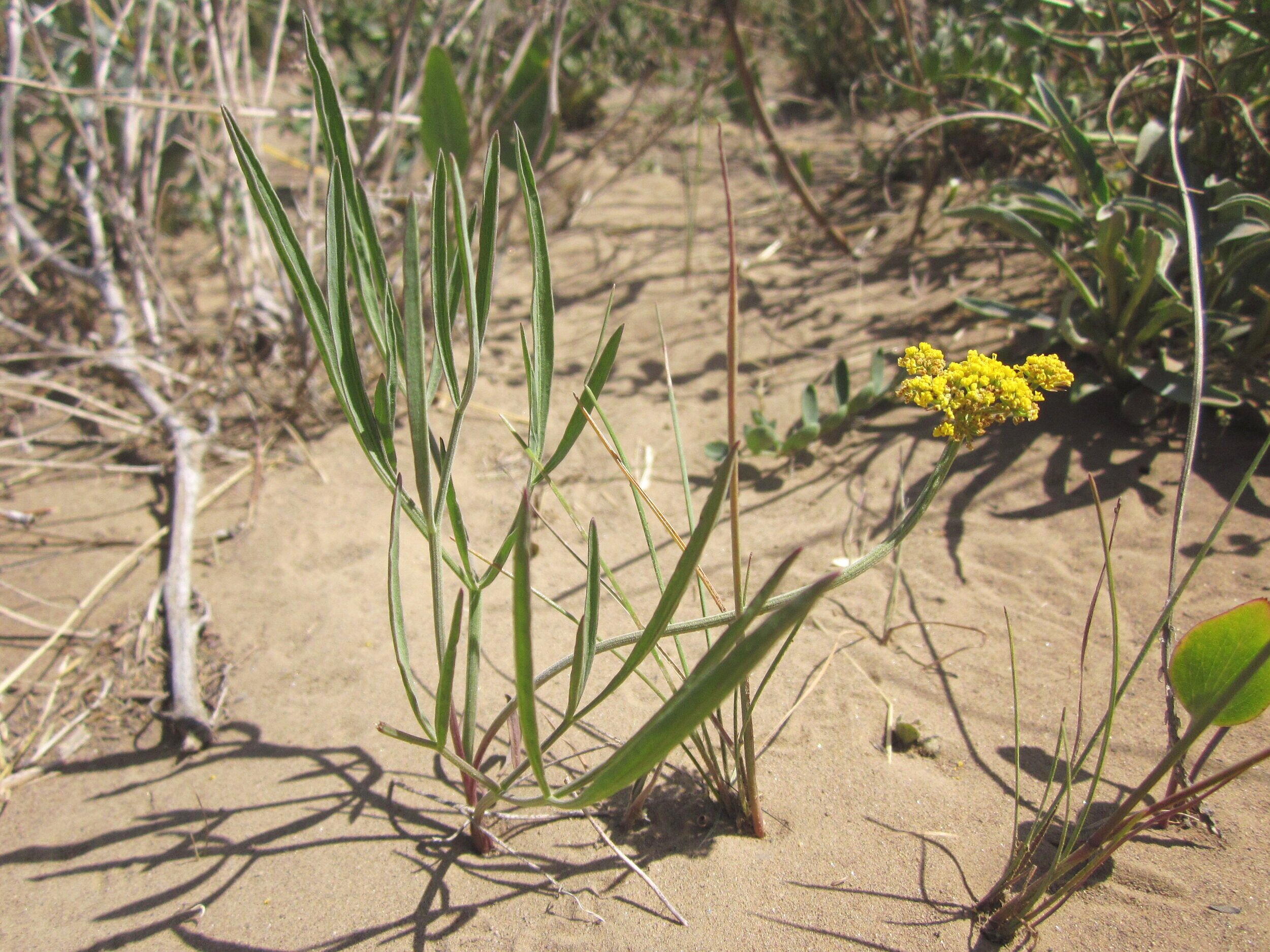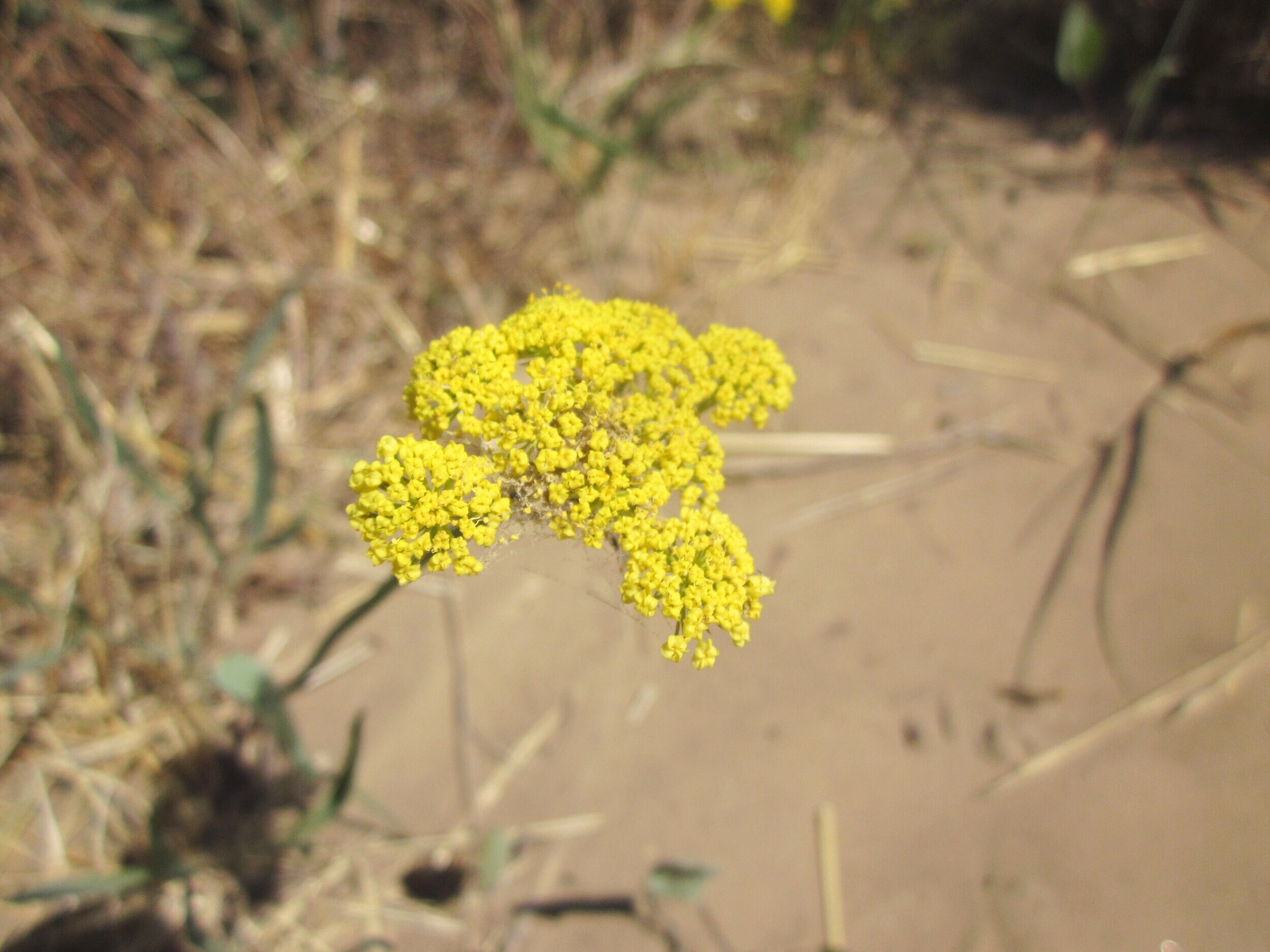Lomatium triternatum (Nineleaf biscuitroot)
Large, somewhat drought tolerant native perennial with long linear leaf segments and inconspicuous yellow flowers, blooming early April to August. Found on rocky and sandy soils in foothills, shrublands and woodland openings up to 12,000 ft. elevation. Crucial early spring forage and pollen for ungulates and pollinators. Foliage and associated insects are vital early spring food for sage-grouse hens and chicks. Biscuitroots are host plants for the Anise swallowtail butterfly and the rare Indra swallowtail butterfly.
DISTRIBUTION / ADAPTATION
INFORMATION & ATTRIBUTES
Family: Apiaceae
Duration: Perennial
Growth Habit: Forb/herb
Native Status: Native
Growth Form: Single stem
Mature Height: 15 in.
Bloom Color: Yellow to purple
Bloom Period: Early summer
Annual Precipitation: 14-30 in.
Drought Tolerance: High
Shade Tolerance: Intermediate
Elevation:
Fire Resistance: Yes
Fire Tolerance: High
Nitrogen Fixation:
SOIL ADAPTATION
Coarse Texture: Yes
Medium Texture: Yes
Fine Texture: Yes
Salinity Tolerance: None
CaCO3 Tolerance: High
pH Range: 6.5-7.5
SEEDING NOTES
Seeds per Pound: 45,000
Seeding Rate: 5-10 PLS lbs/acre
Season: Spring/Fall
Days to Germination:
VARIETIES & LOCAL ACCESSIONS
None
ADDITIONAL LINKS
USDA PLANTS Profile
USDA PLANTS Plant Guide
Wildflowers of the Pacific Northwest
Burke Museum of Natural History and Culture
Consortium of Pacific Northwest Herbaria




